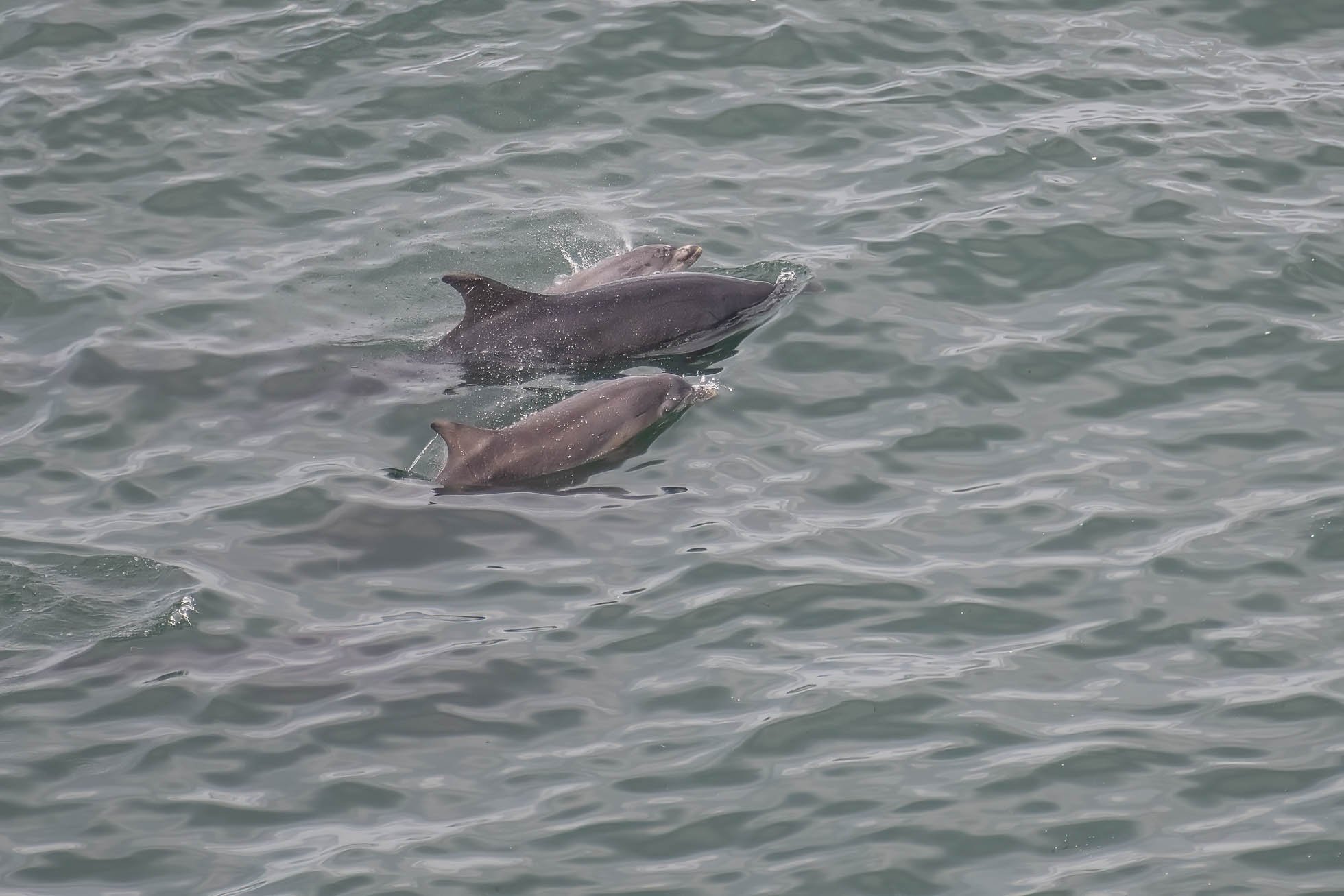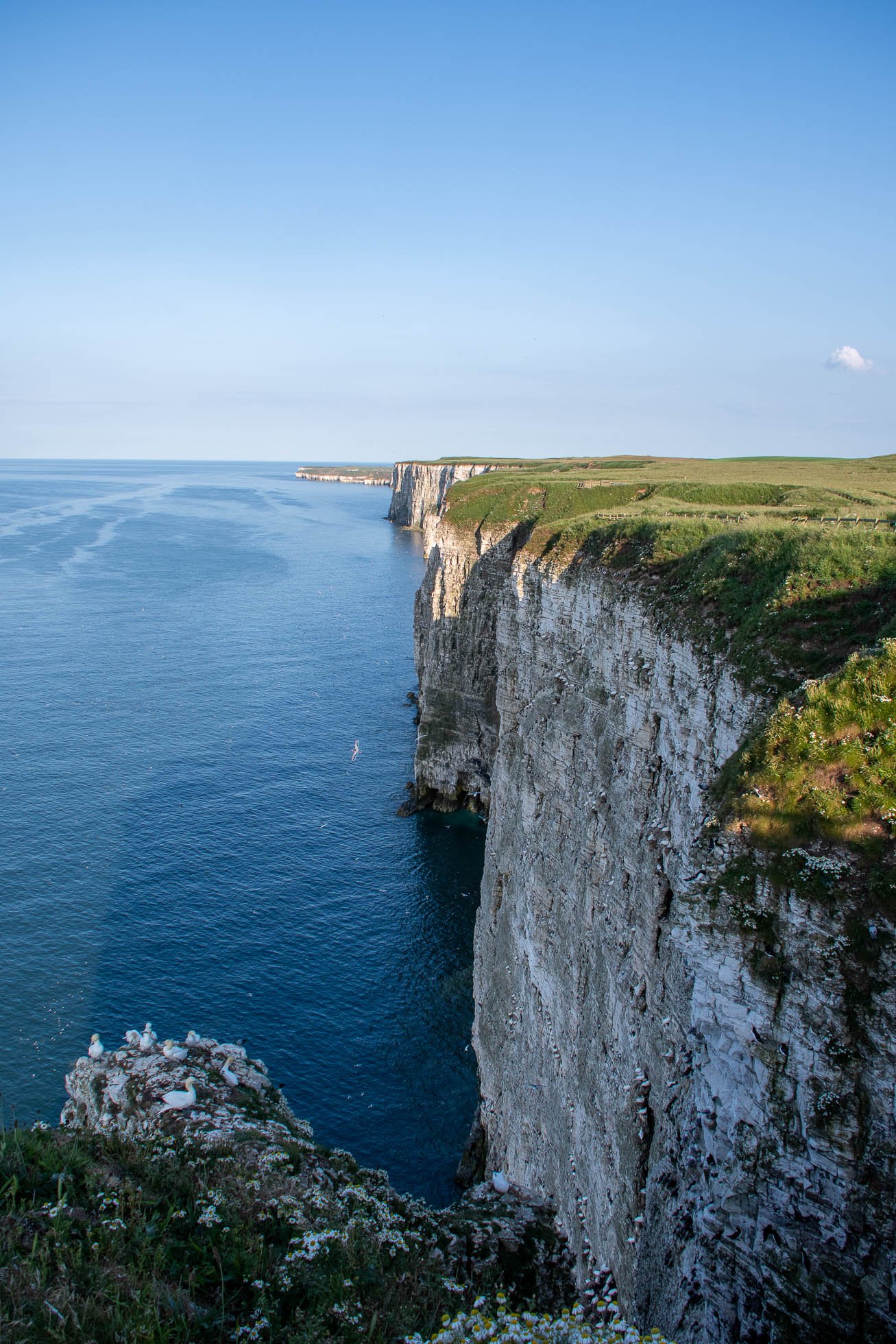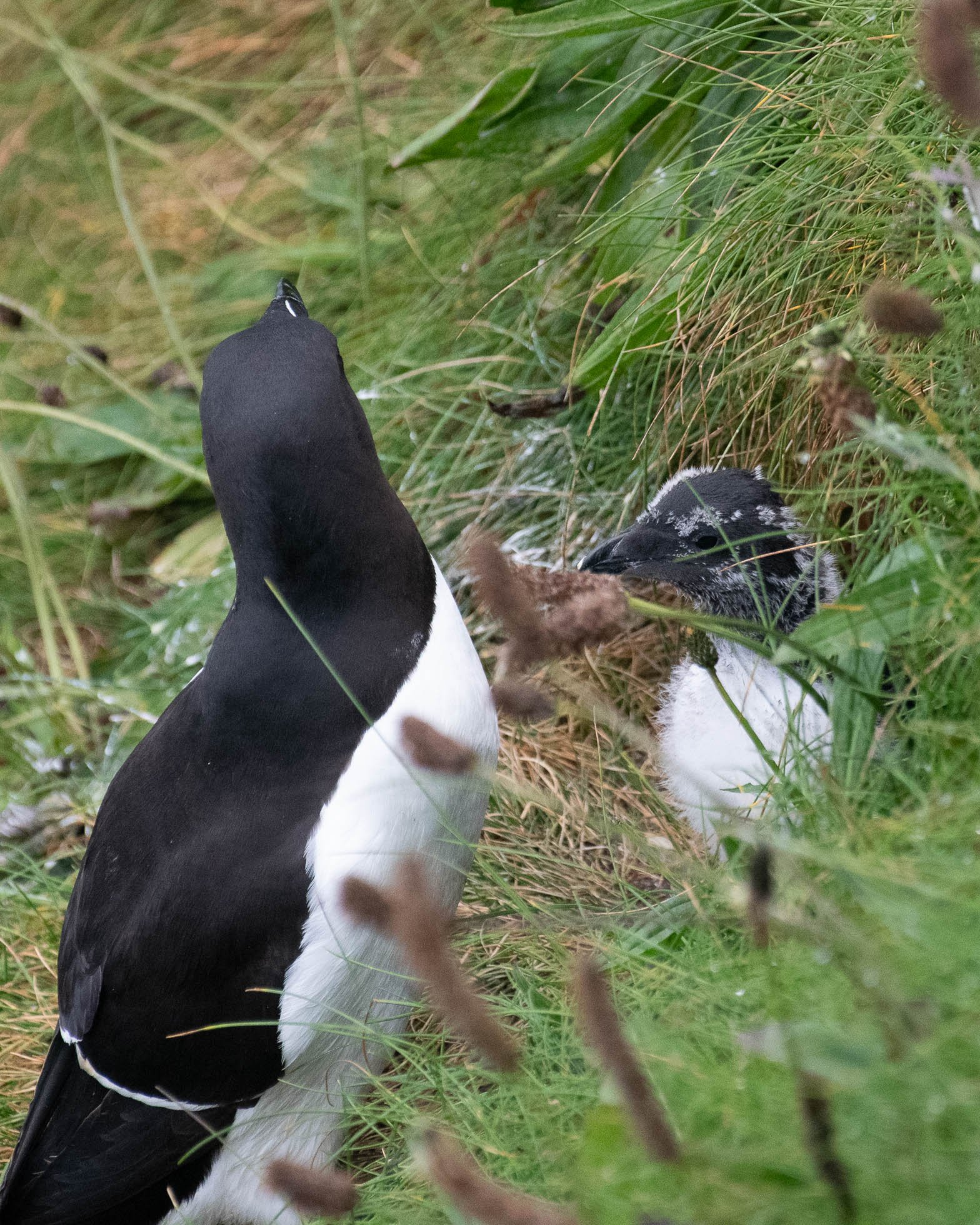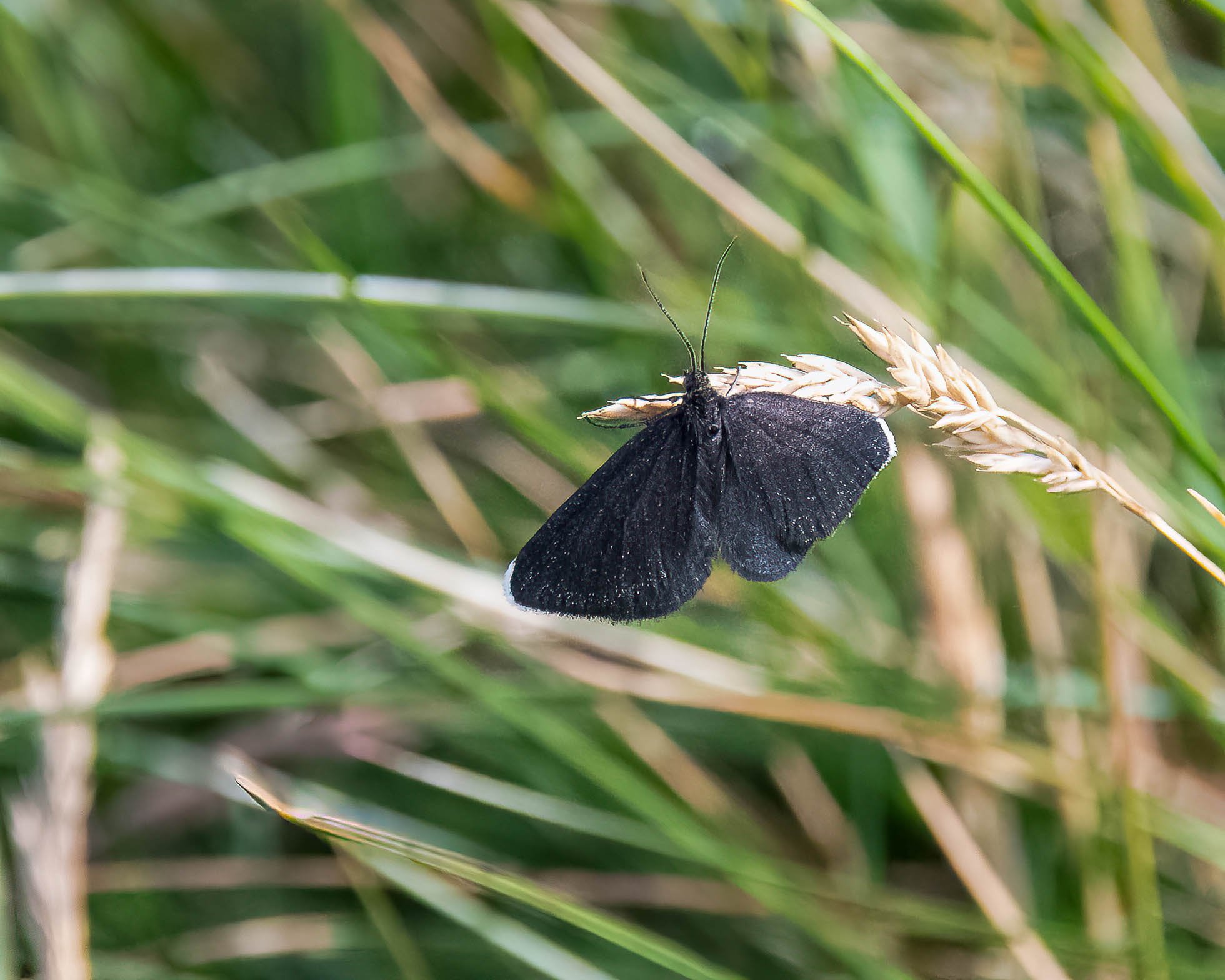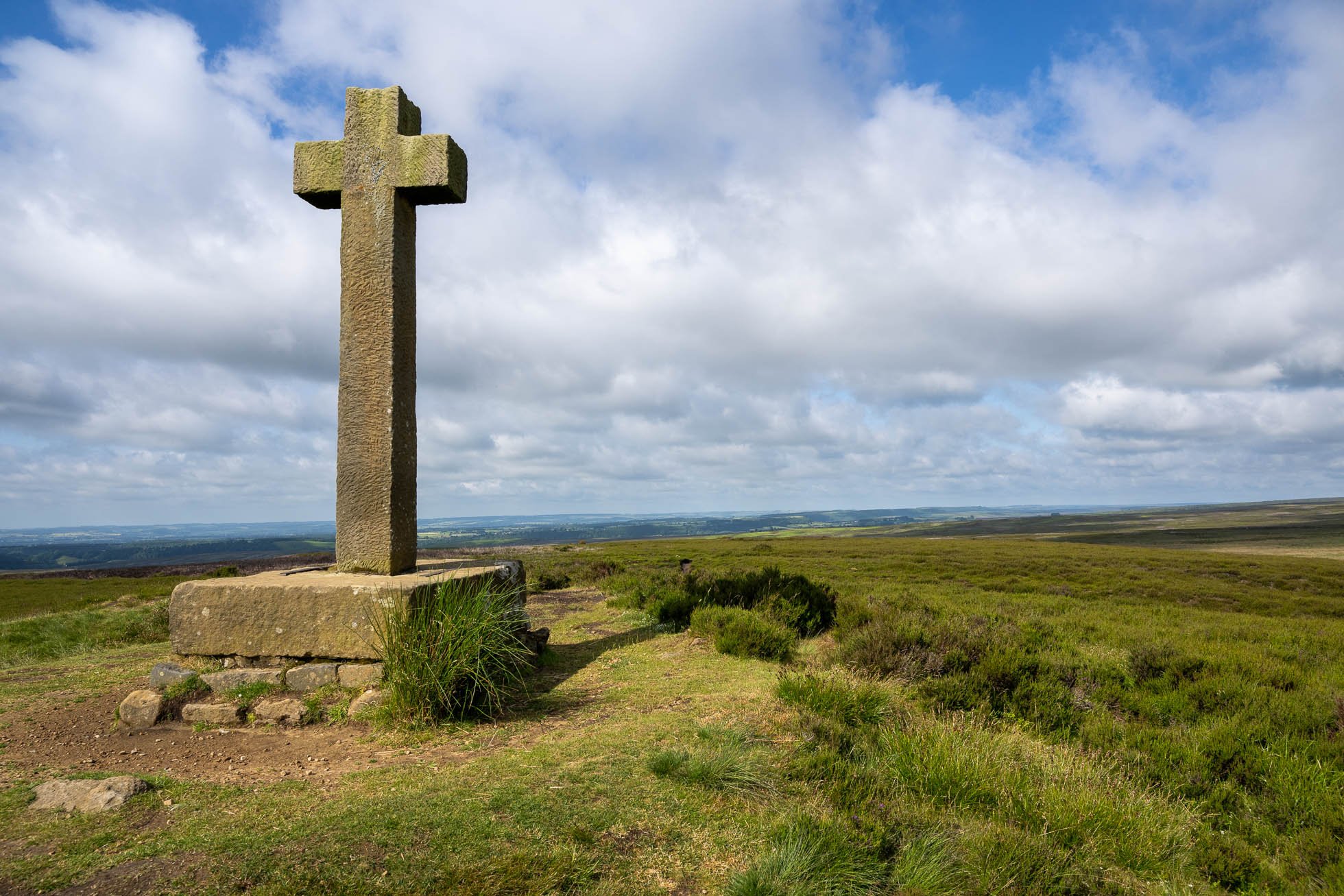Mid summer and we spent the week in North Yorkshire.
Rockville Cottages were welcoming as always and Richard is still painting and running art workshops and has a gallery full of paintings.
We certainly did not expect to see Dolphins on our first visit of the week to RSPB Bempton.
Standing on the cliff top, just taking in the scene when we saw something in the water. Dark shapes, breaking through and then disappearing back into the waves. Could it be? Cameras at the ready trying to get focused on the shapes, and then a small pod of Dolphins, Bottle Nose we think, came into clear view. We couldn’t believe what we were seeing and were quite transfixed watching them. We were also feeling a little bit envious of the passengers on the Yorkshire Belle who were a little way along the coast and were destined for good views of these lovely creatures. By all accounts, they got marvellous views and spectacular pictures of the Dolphins “performing” for them. Still we did manage to get a few pictures, and they turned out better than we expected seeing as we were over 300ft above on the cliff top.
The hard chalk cliffs at Bempton are relatively resistant to erosion and offer many sheltered headlands and crevices for thousands of nesting birds. The cliffs run about 6 miles (10 km) from Flamborough Head north towards Filey and are over 330 feet (100 m) high at points. Around half a million seabirds gather here between March and October to raise a family on towering chalk cliffs which overlook the North Sea. In the winter the cliffs fall silent until the birds start to return the following spring. We absolutely love this place.
A young Gannet, or Northern Gannet, about a year old. Gannets do not turn white until they mature at about 5 years old. They are nearly all brown in the first year and become increasingly more white and less brown the older they get. Sounds familiar….
A Gannet chick is a “Guga” This one is not dead, Mum has decided it is not going anywhere. It’s a long drop down.
Kittiwake nests on the edge. Kittiwakes a spend the winter in oceanic waters out at sea but breed at the coast on sea cliffs and some artificial structures like bridges. They forage near the shore or over the continental shelf in the breeding season. They are sadly in decline in some parts of the UK due to the lack of food such as sand eels, and are unfortunately on the Red List
Razorbills and Guillemots usually nest on the cliff ledges. Well, its not a nest they just lay their eggs on the ledge and hope for the best. Their eggs are shaped so that they do not roll off. How clever is that. This Razorbill looks like it has chosen a more comfortable grassy ledge and the youngster could retreat under the overhanging grass when danger appeared.
A Fulmar on a nest. Just a scrape and few stones, not very comfortable. When threatened, Northern Fulmars have an effective defence: a vile-smelling stomach liquid that the birds can spray out of their mouths for several yards—a good reason to keep your distance from nesting birds!
A beautiful day at Flamborough. The sea was so clear it looked liked the Mediterranean. Probably not so warm to swim in though, this is the North Sea ! .
A Chimney Sweep Moth. What a great name for this little black daytime flying moth that we spotted in the meadow at Flamborough Head. Found only in Northern areas it was a new tick for us.
It was such a hot day and the Grey Seals of Flamborough were just hanging about in the water keeping cool and loving it. Just as we would in a swimming pool. And yes, that is the sea not a pool.
The launching of the Flamborough lifeboat, just a practice run thank goodness. An inshore Atlantic 85 lifeboat operates from the South Landing site. The crew have been presented with 16 awards for gallantry.
Thornwick Bay, a bit of a trek down and up but so worth it.
House Martins nesting on the cliffs again this year at Thornwick Bay.
Filey Bay from the cliff top at Hummanby Gap.
Miles of beach towards Filey. You can walk all the way round when the tide is out, but watch out as the tide comes in fast and you could soon find that the only way off is up the unstable cliff face. We can recommend the Cafe at Hummanby Gap. Situated about halfway down, or half way up, depending which way you are walking. Great views from their terraces plus great coffee, teas, and home cooked food, and water bowls for the dogs.
What a glorious day we had exploring the North Yorkshire Moors.
We spotted lots of Female Red Grouse with chicks out on the moors. Not so many Males. We think they were keeping out of the way now the babies need looking after.
Space, for miles and miles.
Only Diesel trains were running on the North York Moors Railway as the moors were much too dry for Steam Trains which were very likely a fire risk with hot cinders flying from their chimneys.
Darnholme, in Goathland is one of our favourite little places for a dog walk, with open space, stepping stones and a seat near the stream and views of the trains on the North York Moors Railway. This is where we spotted a little butterfly that we were sure we hadn’t seen before. It turned out to be Small Pearl Bordered Fritillary. Definitely new to us.
We like to visit the Filey Dams. A small wetland reserve now managed by the Yorkshire Wildlife Trust. Its one of those reserves that you never quite know what species is going to turn up. This year they had chicks everywhere belonging to Mallard, Little Grebe, Cootes and Moorhens and Canada geese. Two pairs of Gargany (Male above) also looked as though they were going to nest .
We regularly see Avocets in large numbers in Norfolk but at Filey Dams they are a rarity and the fact they had bred was causing quite a stir. We have since found out that they have four chicks, the first ever at this reserve. Such good news.
We had a trip out on the Yorkshire Belle, but sadly the Dolphins did not show up for us.
Although it was a lovely day there was a bit of a sea swell which made photography a bit of a challenge. We had lots of pictures of the sea, and bits of birds. We did capture the Gannet having a rest. You can clearly see his blue eye. Researchers have discovered that some Gannets now have black eyes which is thought to be a sign that they have contracted avian flu and survived.
The Guillemots found a shoal of fish and were busy fishing for their supper. We are not entirely sure what fish they were catching, possibly small Herring.
And, of course, we saw Puffins. Everyone’s favourite little bird.
The sun is setting so must be bedtime. The Guillemots think so.
The lovely Swallows were around the visitor centre as usual and about to start their second brood.
Daylight hours were long and every evening we were privileged to watch the Bempton Barn Owls setting out for the evening hunt. Rumour had it that there were three chicks in the nest box.

